Tired of the Your password has expired and must be changed prompts? Here is how to stop them.
If you've recently got a new Windows device, that you have been using for a few weeks, one day you might be surprised with a sudden prompt informing you that your password has expired and you need to change it:
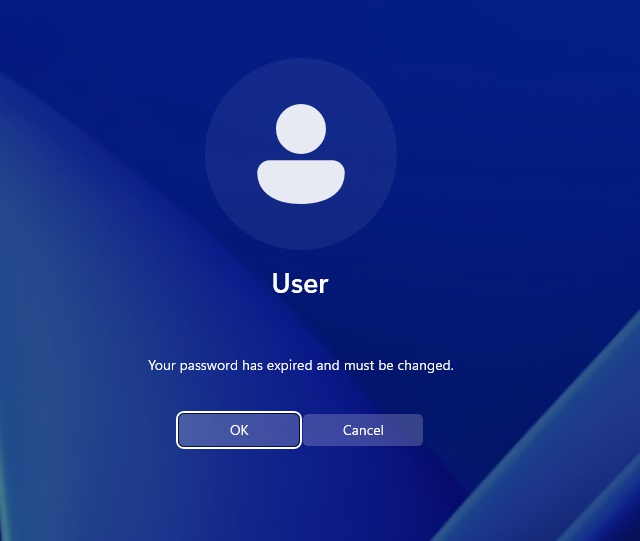
This is due to the password expiration policy that Microsoft creates by default for the new user accounts. Such a policy requires the user to regularly change their passwords. At first glance this might seem like a good idea. However, recent research has shown that these policies are not as secure as previously thought and may actually increase the risk of a security breach. Even Microsoft itself thinks that password expiration requirements do more harm than good ![]() .
.
The first reason why mandatory password expiration policies are not secure is that they encourage users to choose weak passwords. When users know that they will have to change their passwords frequently, they are more likely to choose easy-to-remember passwords or to use the same password across multiple accounts. This is because users find it difficult to create and remember strong passwords and are often overwhelmed with the number of passwords they need to remember. As a result, they resort to predictable and weak passwords that are easily guessable.
Secondly, mandatory password expiration policies increase the risk of password reuse. When users are forced to change their passwords frequently, they tend to choose passwords that are similar to their previous passwords or to use a pattern for creating passwords. This makes it easier for attackers to guess the new password, especially if they have already obtained the user's old password. If a user's password is compromised in one account, it is likely that the same password is used in other accounts as well, which means that an attacker can gain access to multiple accounts by guessing the password.
Thirdly, mandatory password expiration policies increase the risk of phishing attacks. Attackers can use social engineering techniques to trick users into revealing their passwords, and the more frequently passwords are changed, the more opportunities attackers have to exploit this vulnerability. For example, attackers can send phishing emails that appear to be from legitimate sources, asking users to change their passwords. If users fall for this trick, they could be giving their passwords to attackers who can use them to gain access to their accounts.
Finally, mandatory password expiration policies do not address the root cause of security breaches, which is weak passwords. Instead of forcing users to change their passwords frequently, organizations should encourage users to create strong, unique passwords and provide them with tools to manage their passwords securely. For example, organizations can use password managers that generate strong passwords and store them securely.
If you agree that password expiration is not a good strategy to follow, you can stop Windows from using such a policy on your computer. If you use a Professional edition of Windows, the procedure is quite simple: right-click on the Start button, choose Computer Management from the menu, and navigate to System Tools - Local Users and Groups - Users:
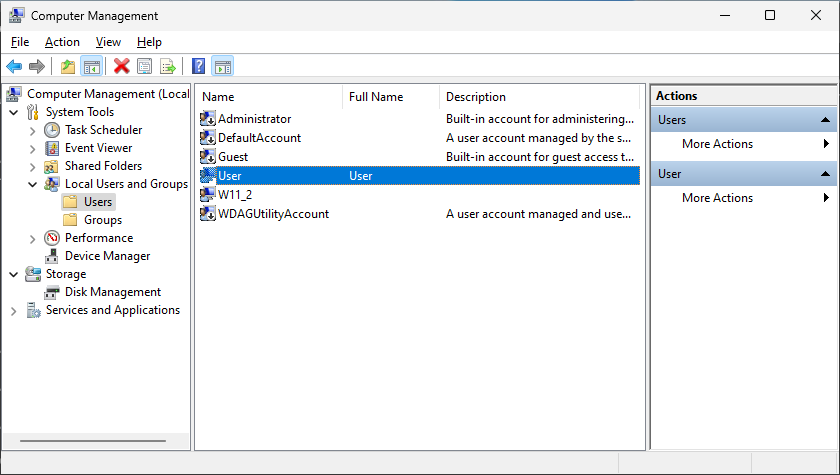
Double click your user name, and change the password settings as follows:
User must change password at next logon: Off
Password never expires: On
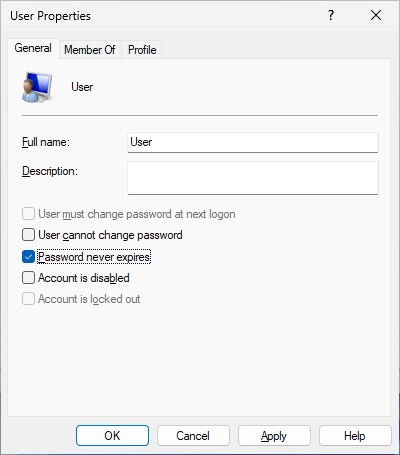
If your edition of Windows (such as Windows Home) does not offer such a tool, you can still make the changes to the password policy using Windows Terminal: right-click on the Start button, and choose Terminal (Admin) or Power Shell (Admin), and enter the following command:
Set-LocalUser -Name "your-user-name" -PasswordNeverExpires 1
Replace your-user-name with your own login name. If you are not sure, open the Start menu, and you should see your login name in the bottom-left corner:
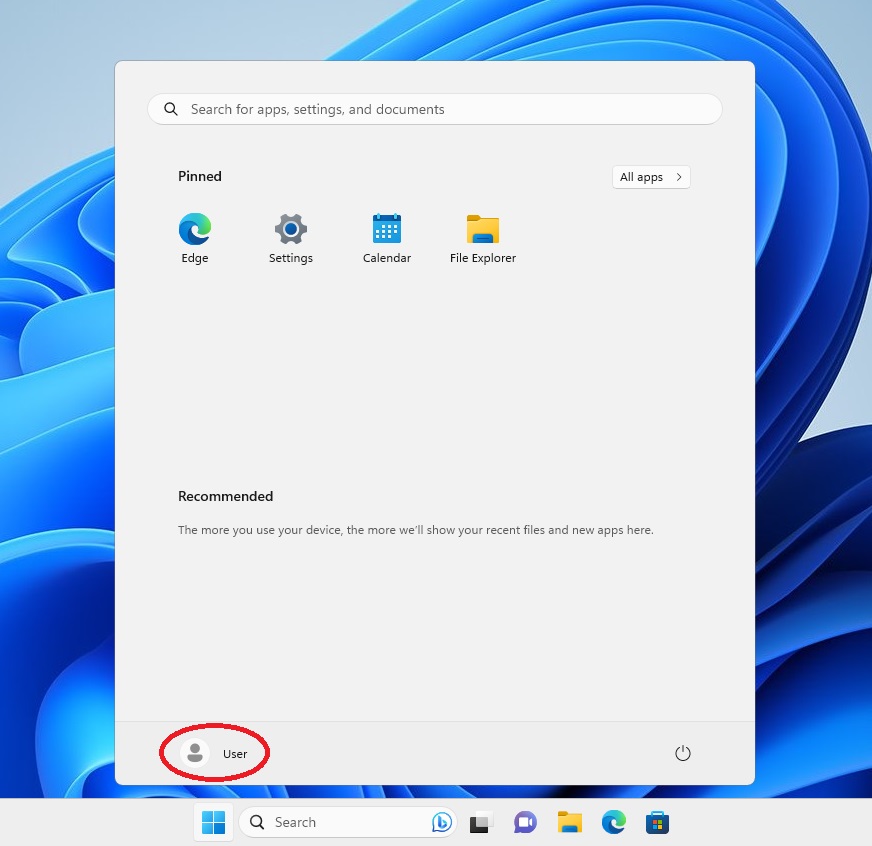
In our example, the login name is actually User, so that's what we use in the command:
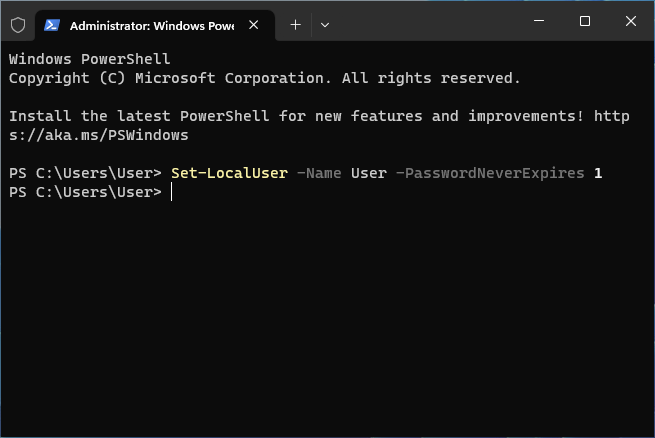
To verify the command has been executed successfully, enter the following in the Power Shell prompt:
Get-LocalUser -Name "your-user-name" | select *
If the result does not contain a specific password expiration date, the change was successful and Windows should no longer prompt you to change the password:
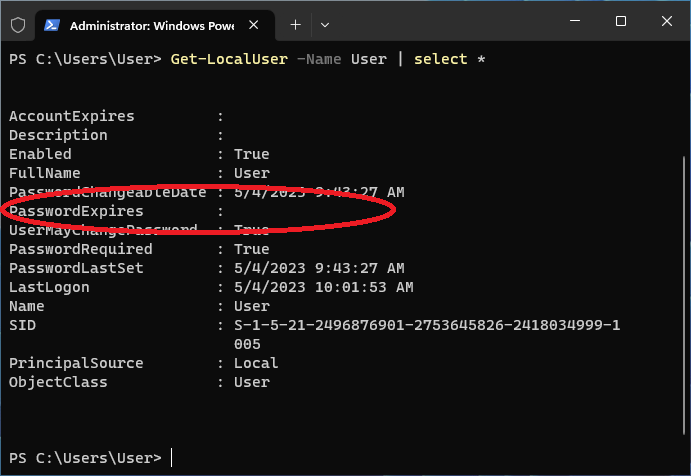
Happy password managing!
If you want to link to this article, you can use this HTML code: <a href="https://www.winability.com/your-password-has-expired-and-must-be-changed/">Tired of the Your password has expired and must be changed prompts? Here is how to stop them.</a>
Read more
- How to disable Adobe's ability to scan all of your organization's documents for generative AI.
- [SOLVED] How to disable Taskbar Thumbnail Preview in Windows 11.
- How to restrict access to Microsoft Store app with Folder Guard.
- Tired of the Your password has expired and must be changed prompts? Here is how to stop them.
- How to move Pictures and other folders to Virtual Encrypted Disk.
- How to disable Fast Startup if you use encryption software.
- How to restore Videos, Pictures, and other folders in This PC in Windows 11.
- How to create a local user account in Windows 11 or Windows 10.
- How to enable or disable test signing mode in Windows.
- Email or SMS text messaging are NOT secure for two-factor authentication.
- Estimate how much you could save on electric bill with ActiveExit software.
- How to delete partition on Windows 11 or Windows 10.
- Forget VeraCrypt password? Here is how to recover it.
- Why do my desktop icons keep moving?
- How to create a private folder in Windows 11 and 10.
- How to restrict access to Windows Settings with Folder Guard.
 Suspending all contact with fascist Russia
Suspending all contact with fascist Russia- How to keep desktop icons from moving by running Icon Shepherd from command line.
- How to restrict access to Task Manager with Folder Guard.
- Take ownership of your files after access denied due to NTFS permissions.
- How to reprogram or disable CAPS LOCK key.
- Encryptability vs Folder Guard: which one to choose?
- Troubleshooting software removal problems using MSI files.
- Encryptability: Compare Personal and Business Licenses.
- How to add Group Policy and Local Security Policy to Windows 11 and 10 Home edition.
- [SOLVED] File is too large for the destination file system.
- Forget your WI-FI password? Find it in Windows 11 and 10 settings.
- What is FAT32 maximum file size limit?
- How to create a secret folder in Windows 11 and 10.
- How to easily password-protect Windows Linux folders with Folder Guard.
- Force DISKPART to delete EFI system partition in Windows 11 and 10.
- How to make Windows 11 and 10 recognize a cloned hard drive again.
- How to stop Windows 11 and 10 from using thumbnail preview icons for folders.
- How to hide pictures from the Photos app in Windows 11 and 10.
- How to save Windows Spotlight photos to your computer.
- How to move the OneDrive folder to an encrypted drive.
- Windows 10 fails to upgrade? Here is how to fix it.
- How to stop Microsoft Edge from opening PDF files.
- Preventing installations of specific programs with Folder Guard.
- Folder Guard licensing explained.
- Speed up the updates of the network folders.
- Make your Windows laptop work as a Wi-Fi access point.
- How to stop automatic Windows Update in Windows 10 and 11.
- [SOLVED] Windows cannot connect to the printer. Access is denied.
- Migrating encrypted data from TrueCrypt to USBCrypt.
- “The Microsoft account service is unavailable right now. Try again later.”
- Using DiffMerge as the external tool of AB Commander to compare plain text files.
- How to repair the icon cache and/or thumbnail cache in Windows 11 and 10.
- Transferring images between your PC and an Android device: Part 2.
- Transferring images between your PC and an Android device: Part 1.
- Case study: Using SoftDetective to suppress Corel Guide sign-in prompt.
- Using junction points to change the iTunes backup folder location.
- How to tell if my Windows computer is 32- or 64-bit?
- How do I stop Windows from rearranging my desktop icons?
- Organize your photo library with the Rename tool of AB Commander.
- Windows does not offer the NTFS format option? Here is how to bring it back.
- How to encrypt Firefox profile, bookmarks, and cookies.
- Restarting Windows 11, 10, and Windows 8 in the safe mode.
- Integrating AB Commander with Universal Viewer.
- How to delete a protected EFI system partition with Windows 11,10, 8, or 7.
- Using Folder Guard to protect from the social engineering attacks.
- How to erase Windows login password if you forget it.
- How to unhide a folder hidden with Folder Guard.
- How to repair Windows desktop icons with AB Commander.
- Slow network in Windows 7 Virtual PC? Speed it up!
- How to show drive letters first in AB Commander and Windows Explorer.
- What is my IP address?
- Why can’t I copy large files over 4GB to my USB flash drive or SD card?
- Test the strength of your password with USBCrypt.
- How to set up an external text editor for AB Commander.
- How to restrict Internet Explorer from downloading programs from the Internet.
- Personal vs business license for USBCrypt.
- Use Folder Guard to restrict access to Control Panel.
- Compare MySecretFolder and Folder Guard.
- Hide folders and make files invisible with Folder Guard.
- WINEXIT vs ActiveExit: automatically log off users from Windows.
- How to protect folder with password in Windows 11 and 10.
- How to restrict access and lock external drives with Folder Guard.
- How to password-protect Dropbox folder with USBCrypt.
- How to set up Folder Guard to stop downloading from the Internet.
- Is (Wipe the content) the same as (Secure Delete)?
- How to encrypt and protect the system C: drive with USBCrypt.
- Make it easier to return your lost encrypted drive.
- USBCrypt for users of Microsoft Office.
- How to start programs elevated from a batch file.
- How to make elevated programs recognize network drives.
- How to disable or enable hibernation.
- Using names and labels to organize USBCrypt drives.
- How to password-protect a USB flash drive.
- Always have a backup of your important files.
 Stand with Ukraine
Stand with Ukraine

